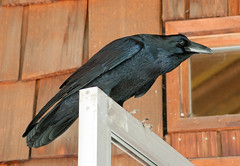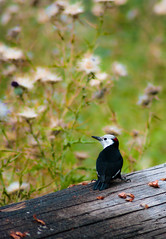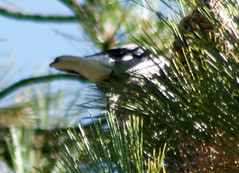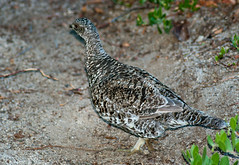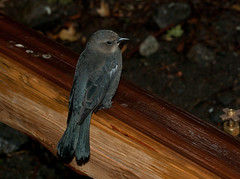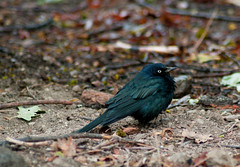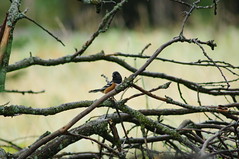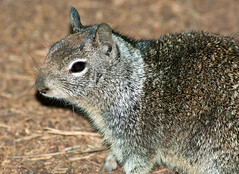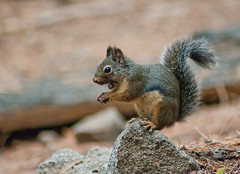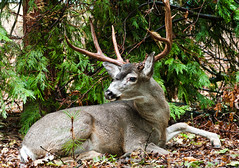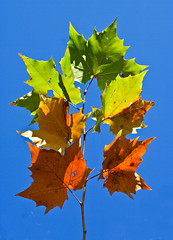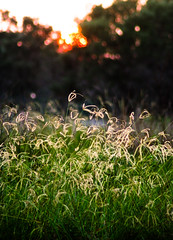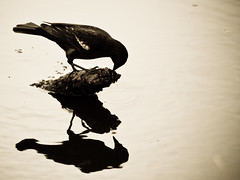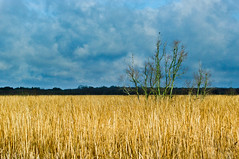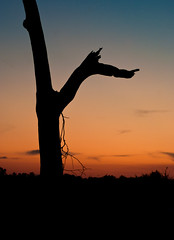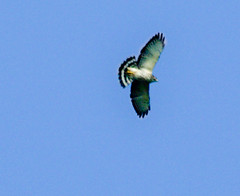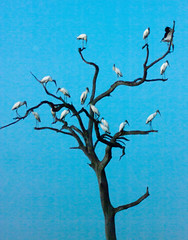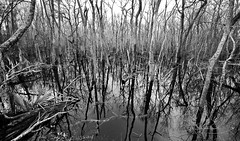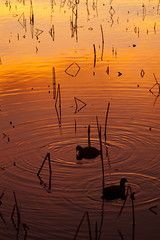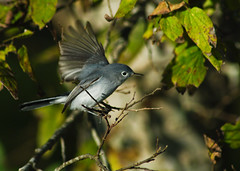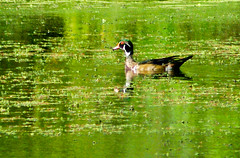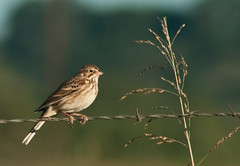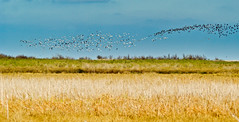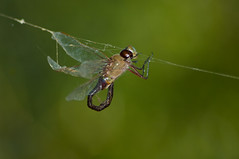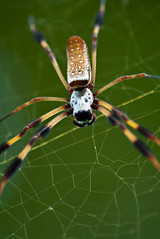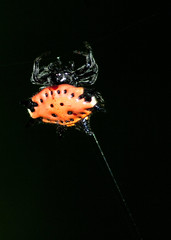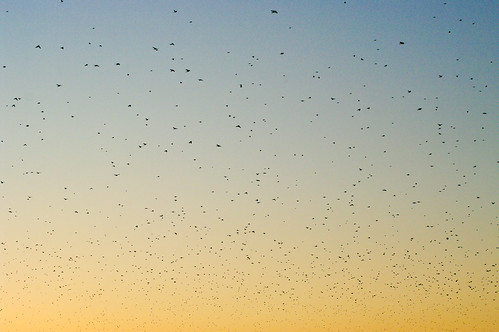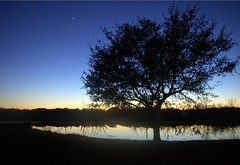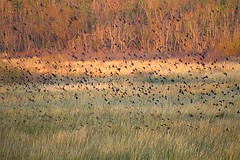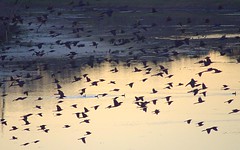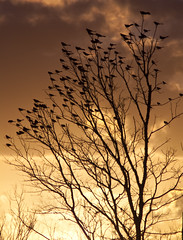When I recently took a trip to Yosemite National Park with my wife (Details of the trip itself at inmediasresblog.blogspot.com), one of the many reasons for anticipation was the chance to see some western[i] species. While we didn't spend a lot of time specifically looking for wildlife while we were there, we did manage to see a couple of cool, new (to me) species.
Birds
While I’m not a birder by specialty[ii], birds are so varied and visible[iii] that one passively encounters quite a few[iv] just by standing in a given location and being conscious[v]. I have not been out west (with the exception of a quick trip to Seattle) since I started “birding”, so I was looking forward to western birds in general, and especially the sub-alpine and alpine species that Yosemite might yield up. I ended up having very little time to go out specifically looking for birds, and the persistently rainy weather didn't help. However, we ended up getting fairly lucky. I counted a Western scrub jay at a friend’s house in Sacramento before we even got to the Park, and I logged 9 new species, and a great picture of a common raven[vi] over the course of our time in Yosemite. Common Ravens and Brewer’s blackbirds were everywhere in Yosemite Valley, and there were several Stellar’s Jays about as well. I managed to get some decent shots of White-headed woodpeckers in Mariposa Grove, a Brown Creeper at the base of Yosemite Falls, and several Sooty Grouse and a Clark’s Nutcracker at the base of the final ascent for Half-Dome. I finished out the trip with a flock of Spotted Towhees in a pile of bracken in Cook’s Meadow.
Mammals
There are a lot of rodents in California. A lot[vii]. I encountered several squirrel or squirrel-like animals in various elevations. The California Ground Squirrels were persistent little things, completely habituated to human presence in the Valley. Making sandwiches in the morning outside our tent required constant vigilance, as they would often team up and create distractions, and were not fazed at all by human aggression. In the Mariposa Grove, we found both Douglas Squirrels, with their elfin ears and voracious appetite for pine cones, and Lodgepole Chipmunks, who didn't hesitate to make their annoyance at our presence known. We saw several Western Grey Squirrels, but I didn't managed to catch one on “film”.
There are also supposedly a lot of black bears in Yosemite. However, despite omnipresent bear lockers, “speeding kills bears” road signs[viii], and tons of bear-themed merchandise, we didn't see or hear a single bear. Sadly, even with hordes of sticky, unwashed children in tents nearby, no bears took the bait and wandered in. One evening I did wake up to hear a rustle behind our tent, and then a steady deep grunting. Much to my disappointment, however, it turned out just to be the heavyset man in the tent behind us snoring it up to beat the band.
While we missed out on the bears, we made up for it with copious Mule Deer. The deer seemed to also be fairly domesticated in the valley, with small herds roaming through Yosemite Village. However, we did encounter many in the wild, and had one great encounter with a fawn at close range on the Mist Trail to Half-Dome. My favorite encounter of the trip occurred on our arrival, as we were walking through the dark[ix]way in to our campsite, in the midst of crowds of people, a Ringtail darted between trees and into the forest. At first I thought it was one of the almost tame Raccoons that infest Curry Village, but its long ringed tail and lemur-esque appearance ruled that out. It was a rare treat[x] to see this elusive nocturnal species, especially in such an unlikely place.
Everything Else
Sadly, we didn't encounter much else of Animalia. Insects seemed to be in hiding from the sudden coldsnap, and while we had more than our fair share of water, amphibians and reptiles were nowhere to be seen. The sole representative of the rest of these teeming categories of life was a Western Fence Lizard I found sunning itself at about 8000 ft. above sea level on the trail to Half-Dome.
All in all, a great trip and a great introduction to western wildlife of the Sierras.
Notes
[i] The continental divide and related factors lead to variations of familiar species, and separate spheres for region specific species. Many of the ho hum bird species of the eastern areas are novel for westerners, and vice versa
[ii] These protestations are starting to wear thin, as I accumulate more and more birds. I’ll be co-leading a Christmas Bird Count for the Audubon Society this year.
[iii] Especially in the daytime, unlike many wild mammals.
[iv] Which is why I think birding is so easy to get into. You can see a lot without a lot of expertise in finding birds. A backyard feeder may draw a dozen different species in a day. That sort of return on investment is much harder to imagine in, say, herpetological pursuits.
[v] In Texas you can accumulate even more while unconscious. Unfortunately, they will likely all be Cathartes aura and/or Coragyps atratus.
[vi] My previous shot of a common raven was about three steps below the usual crytobiotic standard set by Sasquatch/Nessie/etc.
[vii] Admittedly, it’s a big state, and admittedly, Rodents is a pretty big group. But there are 98 species in California, and that’s not even counting rodent-like species such as voles, etc. For comparison, New York state has less than 25 species.
[viii] As noted on the other blog, I think it’s just irresponsible to let bears drive to begin with, even at safe speeds.
[ix] Stan, you weren’t kidding about needing to get there before dark set. 120 was a blast that evening.
[x] We confirmed our sighting with a Ranger the next day, who said in all her time there, she’d only seen one once. When we told her how we had seen one within 20 minutes of being in the park, I think we broke her heart just a little bit.

